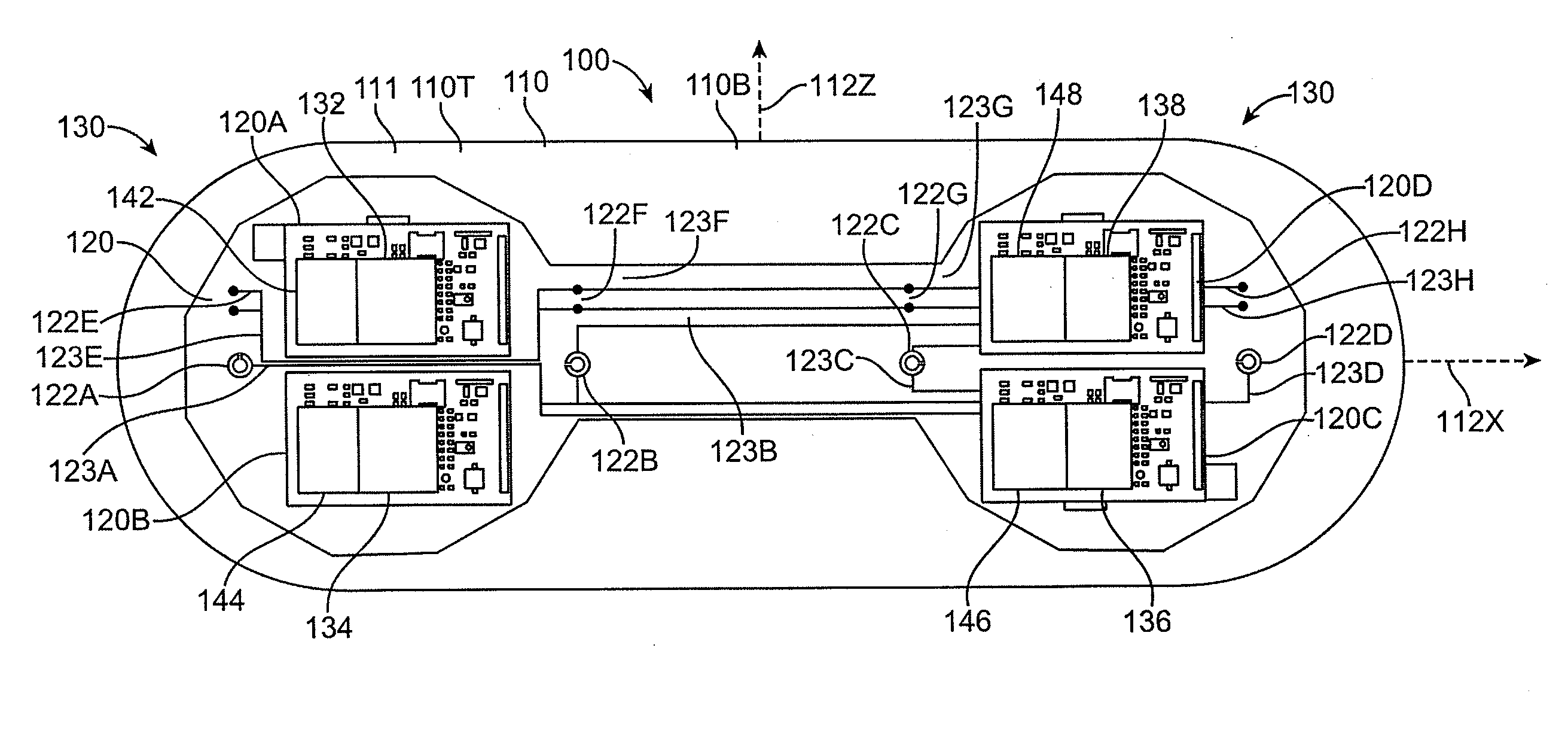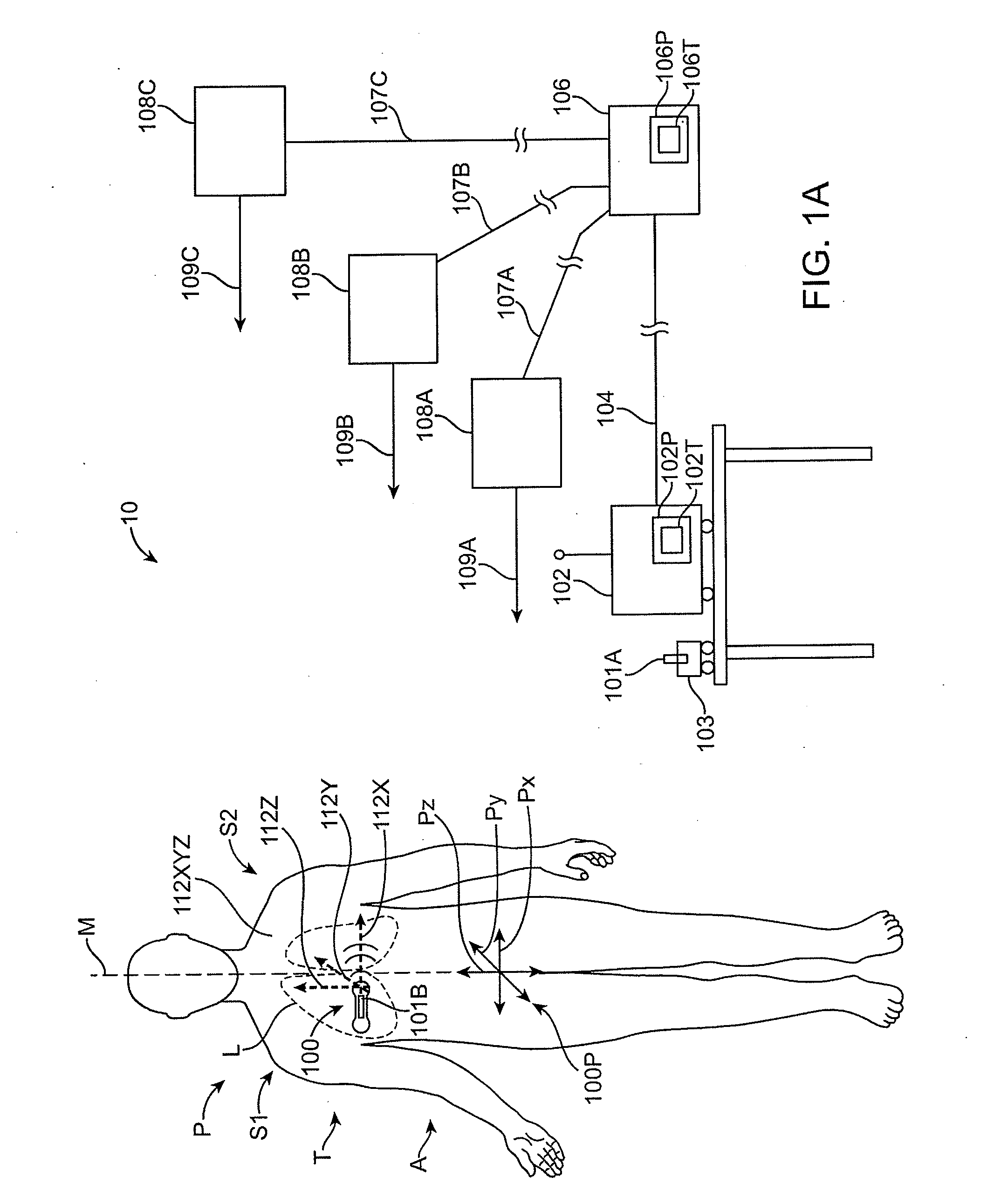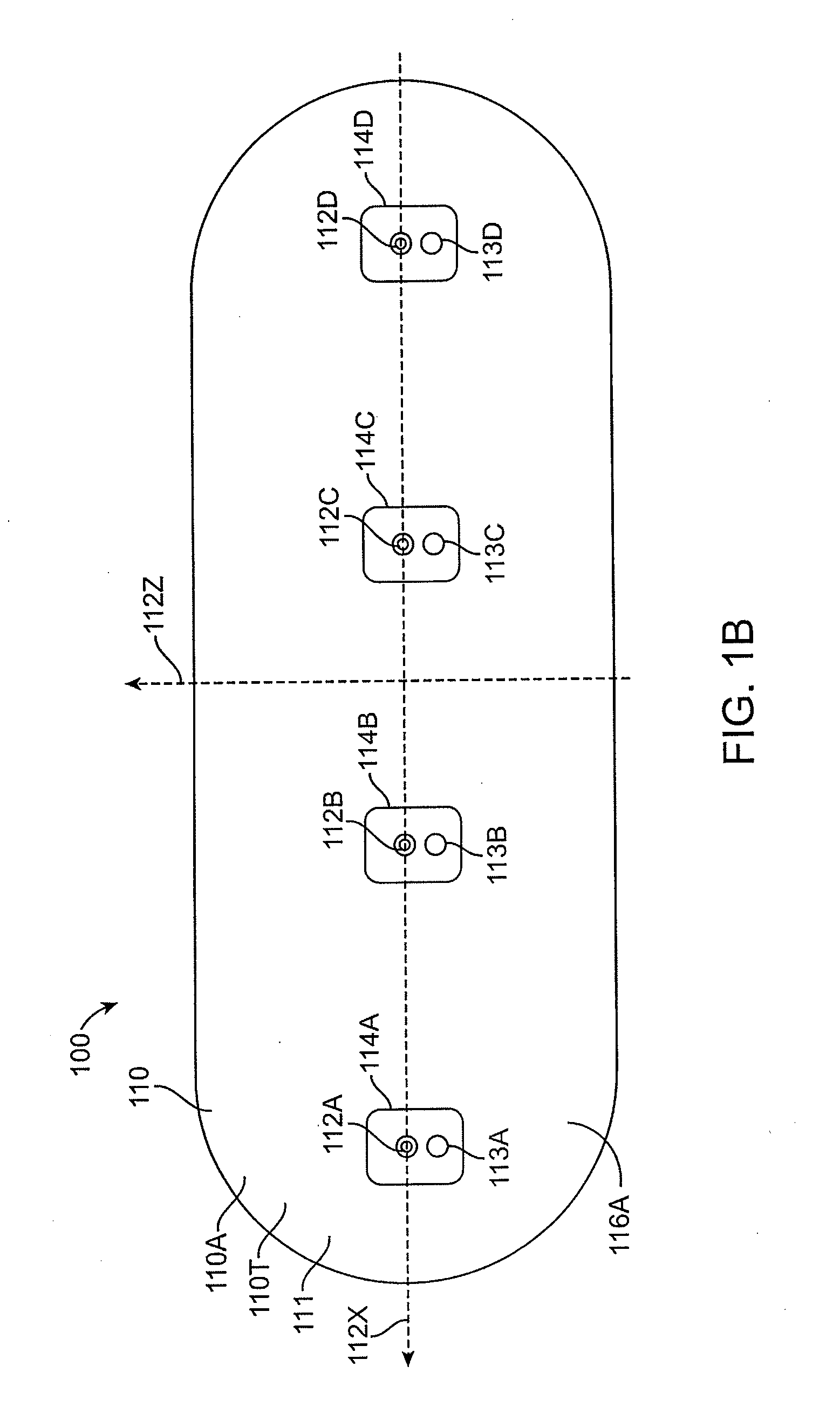Method and Apparatus for Monitoring Fluid Content within Body Tissues
a technology for monitoring and body tissues, applied in the field of patient monitoring, can solve the problems of insufficient monitoring of patients, cardiac decompensation or heart failure, and measurement alone may not be sufficient to reliably detect and/or avoid an impending cardiac decompensation, so as to improve the accuracy and reliability of fluid determination, the effect of determining the hydration of the target tissu
- Summary
- Abstract
- Description
- Claims
- Application Information
AI Technical Summary
Benefits of technology
Problems solved by technology
Method used
Image
Examples
Embodiment Construction
[0077]Embodiments of the present invention relate to patient monitoring. Although embodiments make specific reference to monitoring fluid content and electrocardiogram signals with an adherent patch, the system methods and device described herein may be applicable to any application in which physiological monitoring is used, for example wireless physiological monitoring for extended periods.
[0078]Embodiments of the present invention provide methods and devices for monitoring fluid content within body tissues, such as the lungs, via impingement of ultrasonic signals into the body through an adherent device and by analysis of a return signal. Changes in fluid content can manifest as altered return signals when compared to data collected over the life of the adherent device or a series of adherent devices. Differences in ultrasound propagation may be used to determine fluid content in body tissues, and to monitor fluid content, and thus monitor the progress of various clinical conditio...
PUM
 Login to View More
Login to View More Abstract
Description
Claims
Application Information
 Login to View More
Login to View More - R&D
- Intellectual Property
- Life Sciences
- Materials
- Tech Scout
- Unparalleled Data Quality
- Higher Quality Content
- 60% Fewer Hallucinations
Browse by: Latest US Patents, China's latest patents, Technical Efficacy Thesaurus, Application Domain, Technology Topic, Popular Technical Reports.
© 2025 PatSnap. All rights reserved.Legal|Privacy policy|Modern Slavery Act Transparency Statement|Sitemap|About US| Contact US: help@patsnap.com



